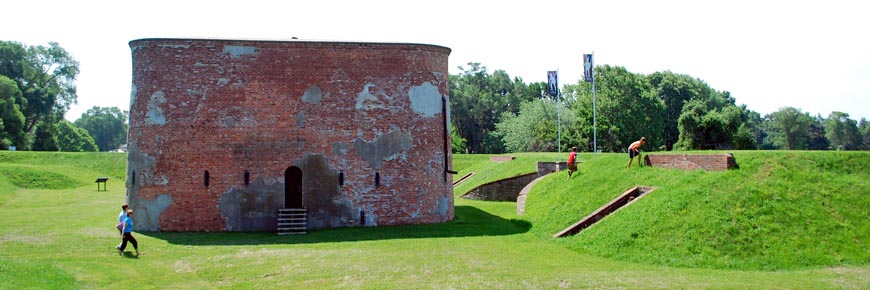
Fort Mississauga National Historic Site
Fort George National Historic Site
Improvements and infrastructure Fort Mississauga
Improvements and infrastructure projects at Fort Mississauga National Historic Site.
History
Formerly the site of the first lighthouse in Upper Canada, Fort Mississauga was built between 1814 and 1816 in a strategic position at the mouth of the Niagara River to replace Fort George in protecting the British/Canadian side of the frontier and to counter Fort Niagara on the American side. It was garrisoned (a place where troops were stationed) until 1826. It was rearmed following the Rebellion of 1837 to respond to border disputes until 1854 and again during the American Civil War and the Fenian scare of 1866. The fort then fell into ruin until the early 1900s. It was then used to train recruits for the First and Second World War, as part of Camp Niagara. In 1960, Fort Mississauga was officially designated a historic site of national significance by the Historic Sites and Monuments Board of Canada.
Built in part from the remains of the lighthouse and bricks salvaged from the town after it was destroyed by retreating American forces in 1813, Fort Mississauga is a large, square, brick defensive tower set within the remains of a star-shaped earthworks. It is the only remaining example in Canada of this type of fortification. On the landward side, this national historic site is an active golf course with beautiful greens and amazing views.
Visiting this site
Fort Mississauga is located at 223 Queen Street in Niagara-on-the-Lake. Though the tower remains closed year round, the site, interpretation panels, and star-shaped earthen works are accessible via walking paths, allowing visitors to experience this rare military structure nestled at the mouth of the Niagara river with a commanding view of Lake Ontario
In late 2020 Parks Canada connected a new lakeshore trail that extends from the cairn of the Battlefield of Fort George along the shoreline of Lake Ontario through to Fort Mississauga, where visitors can meet up with a walking trail that extends to Front Street in Niagara-on-the-Lake.
Please note, this national historic site is on an active golf course and visitors must remain aware of their surroundings and be mindful of directional signage.
Located at 223 Queen Street, Niagara-on-the-Lake.
Free admission to grounds. The site is accessible year-round.
- Date modified :